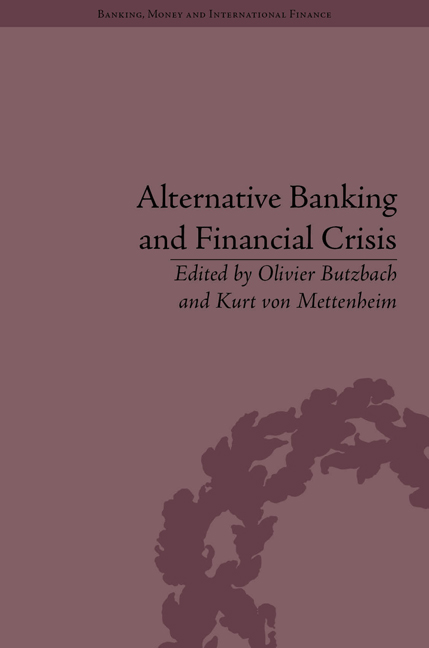Book contents
- Frontmatter
- CONTENTS
- Acknowledgements
- List of Contributors
- List of Figures and Tables
- Introduction
- Part I Historical Context and Conceptual Framework
- 1 Alternative Banking History
- 2 The Comparative Performance of Alternative Banks before the 2007–8 Crisis
- 3 The Counter-Cyclical Behaviour of Public and Private Banks: An Overview of the Literature
- 4 Explaining the Competitive Advantage of Alternative Banks: Towards an Alternative Banking Theory?
- Part II Comparative Country Cases
- Conclusion
- Notes
- Index
4 - Explaining the Competitive Advantage of Alternative Banks: Towards an Alternative Banking Theory?
from Part I - Historical Context and Conceptual Framework
- Frontmatter
- CONTENTS
- Acknowledgements
- List of Contributors
- List of Figures and Tables
- Introduction
- Part I Historical Context and Conceptual Framework
- 1 Alternative Banking History
- 2 The Comparative Performance of Alternative Banks before the 2007–8 Crisis
- 3 The Counter-Cyclical Behaviour of Public and Private Banks: An Overview of the Literature
- 4 Explaining the Competitive Advantage of Alternative Banks: Towards an Alternative Banking Theory?
- Part II Comparative Country Cases
- Conclusion
- Notes
- Index
Summary
Introduction
As mentioned in the Introduction to this volume, the surprising performance of alternative banks cannot be explained by a mainstream literature on banking mostly focused on for-profit commercial banks. There is, it is true, a sizeable body of works specifically dedicated to not-for-profit financial institutions, and in particular to the theoretical understanding of the comparative performance of such organizations. The present chapter builds on these studies to theoretically explain the foundations of alternative banks' competitive advantage, furthering the advances made by the empirical literature reviewed in Chapter 2. Some of these works were cited in the Introduction to the present volume.
However, most research on alternative banks focuses almost exclusively on governance and ownership issues, which, as will become clear here, are only part of the answer to the question raised above. As Rasmussen put it in an important work twenty-five years ago, ‘the difference between mutual and stock banks lies in who controls the bank and receives the profits’. A sizeable part of this chapter will therefore be dedicated to a discussion of such works. Still, it is important to look at modern theories of banking for theoretical indications, or sketches, that might be relevant to the question raised at the end of Chapter 2 – in other words, how can we theoretically account for the competitive advantage of alternative banks over time?
- Type
- Chapter
- Information
- Alternative Banking and Financial Crisis , pp. 51 - 70Publisher: Pickering & ChattoFirst published in: 2014

